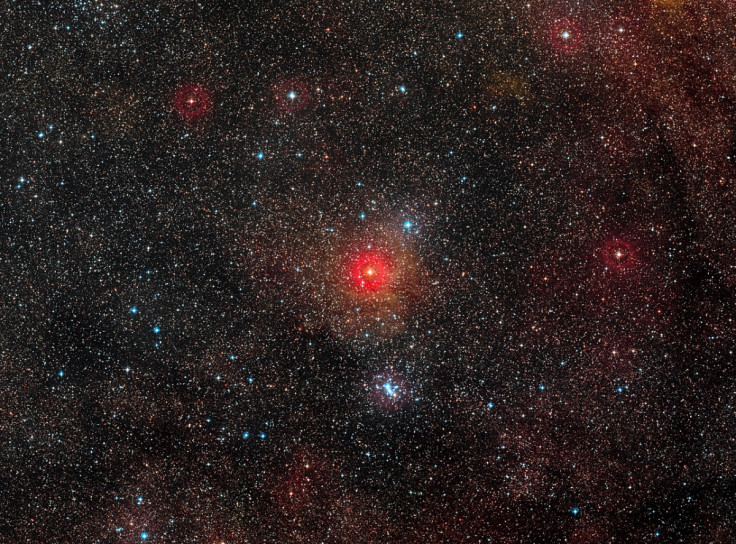'Giant Peanut' Yellow Star HR 5171 A is 1,300 Times Size of the Sun

Astronomers have found the largest yellow star every to be discovered, measuring 1,300 times the diameter of the Sun.
Using European Southern Observatory's Very Large Telescope, an international team discovered the size of HR 5171 A using old and new observations.
As well as being the largest yellow star, the team also found HR 5171 A is in the top ten of the largest stars currently known. It is 50% larger than the red supergiant Betelgeuse and one million times brighter than the Sun. Its surface temperature is around 5000C.
Estimating its size, the team at the ESO said the star has been getting bigger over the last 40 years, cooling as it grows. Despite being located 12,000 light years from Earth, HR 5171 A can be seen with the naked eye.
"The two stars are so close that they touch and the whole system resembles a gigantic peanut."
Study leader Oliver Chesneau
Yellow hypergiants like HR 5171 A are extremely rare, with just a dozen in our galaxy and the best known being Rho Cassiopeiae. These huge stars are very unstable and change rapidly, meaning they expel material outwards and form an extended atmosphere around the star.
Oliver Chesneau, from the Observatoire de la Côte d'Azur, said: "The new observations also showed that this star has a very close binary partner, which was a real surprise. The two stars are so close that they touch and the whole system resembles a gigantic peanut."
Astronomers used a technique that combines the light from multiple individual telescopes to create one huge telescope. They then looked through older observations to see how the star has changed and behaved over the last 60 years.
After looking at the data, astronomers found it is eclipsing a binary system where the smaller component passes in front and behind as it orbits - HR 5171 A is orbited by its companion star every 1,300 days.
Chesneau said: "The companion we have found is very significant as it can have an influence on the fate of HR 5171 A, for example, stripping off its outer layers and modifying its evolution."
© Copyright IBTimes 2025. All rights reserved.






















